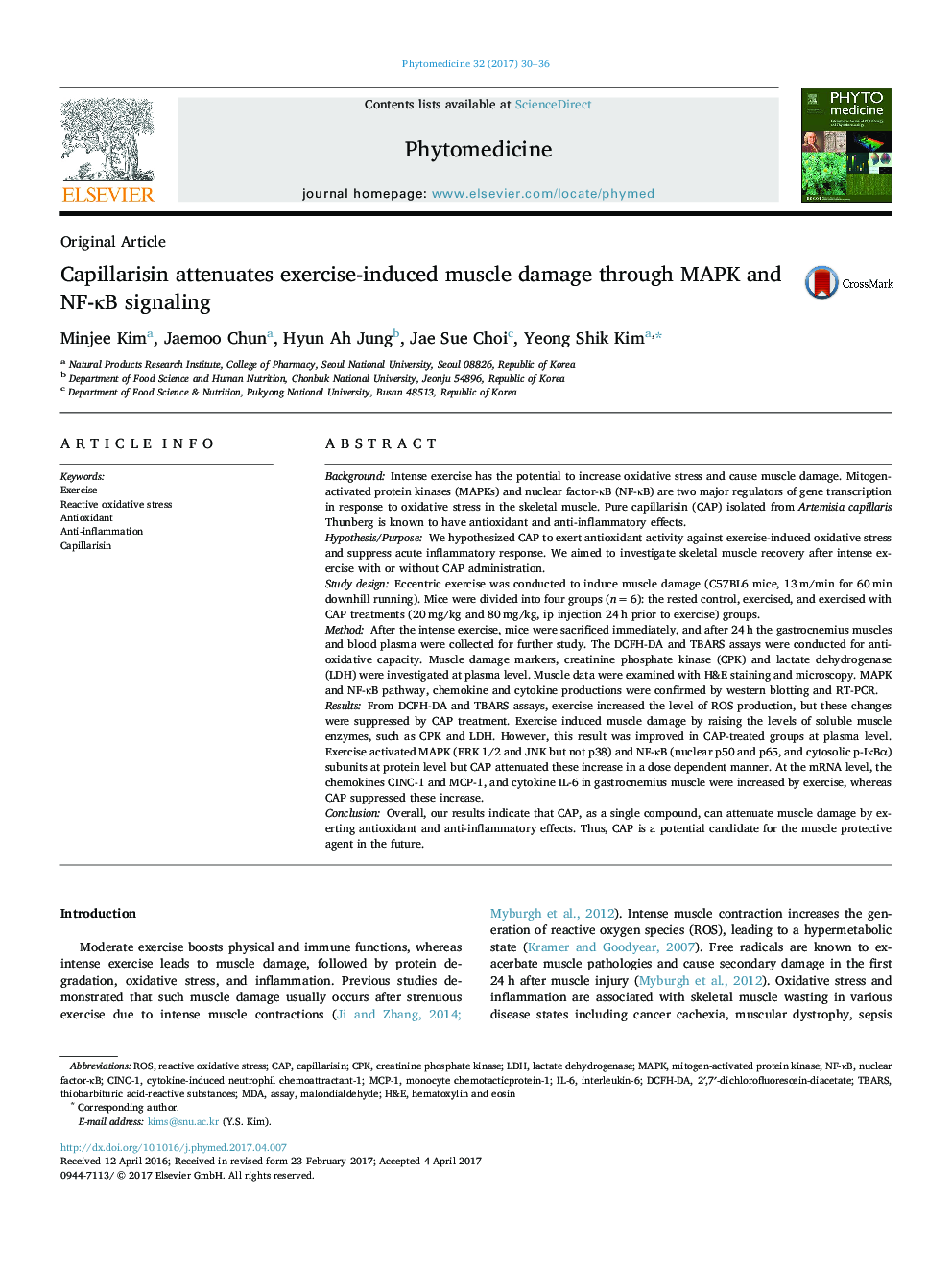| کد مقاله | کد نشریه | سال انتشار | مقاله انگلیسی | نسخه تمام متن |
|---|---|---|---|---|
| 5549289 | 1556687 | 2017 | 7 صفحه PDF | دانلود رایگان |

BackgroundIntense exercise has the potential to increase oxidative stress and cause muscle damage. Mitogen-activated protein kinases (MAPKs) and nuclear factor-κB (NF-κB) are two major regulators of gene transcription in response to oxidative stress in the skeletal muscle. Pure capillarisin (CAP) isolated from Artemisia capillaris Thunberg is known to have antioxidant and anti-inflammatory effects.Hypothesis/PurposeWe hypothesized CAP to exert antioxidant activity against exercise-induced oxidative stress and suppress acute inflammatory response. We aimed to investigate skeletal muscle recovery after intense exercise with or without CAP administration.Study designEccentric exercise was conducted to induce muscle damage (C57BL6 mice, 13 m/min for 60 min downhill running). Mice were divided into four groups (n = 6): the rested control, exercised, and exercised with CAP treatments (20 mg/kg and 80 mg/kg, ip injection 24 h prior to exercise) groups.MethodAfter the intense exercise, mice were sacrificed immediately, and after 24 h the gastrocnemius muscles and blood plasma were collected for further study. The DCFH-DA and TBARS assays were conducted for anti-oxidative capacity. Muscle damage markers, creatinine phosphate kinase (CPK) and lactate dehydrogenase (LDH) were investigated at plasma level. Muscle data were examined with H&E staining and microscopy. MAPK and NF-κB pathway, chemokine and cytokine productions were confirmed by western blotting and RT-PCR.ResultsFrom DCFH-DA and TBARS assays, exercise increased the level of ROS production, but these changes were suppressed by CAP treatment. Exercise induced muscle damage by raising the levels of soluble muscle enzymes, such as CPK and LDH. However, this result was improved in CAP-treated groups at plasma level. Exercise activated MAPK (ERK 1/2 and JNK but not p38) and NF-κB (nuclear p50 and p65, and cytosolic p-IκBα) subunits at protein level but CAP attenuated these increase in a dose dependent manner. At the mRNA level, the chemokines CINC-1 and MCP-1, and cytokine IL-6 in gastrocnemius muscle were increased by exercise, whereas CAP suppressed these increase.ConclusionOverall, our results indicate that CAP, as a single compound, can attenuate muscle damage by exerting antioxidant and anti-inflammatory effects. Thus, CAP is a potential candidate for the muscle protective agent in the future.
108
Journal: Phytomedicine - Volume 32, 15 August 2017, Pages 30-36